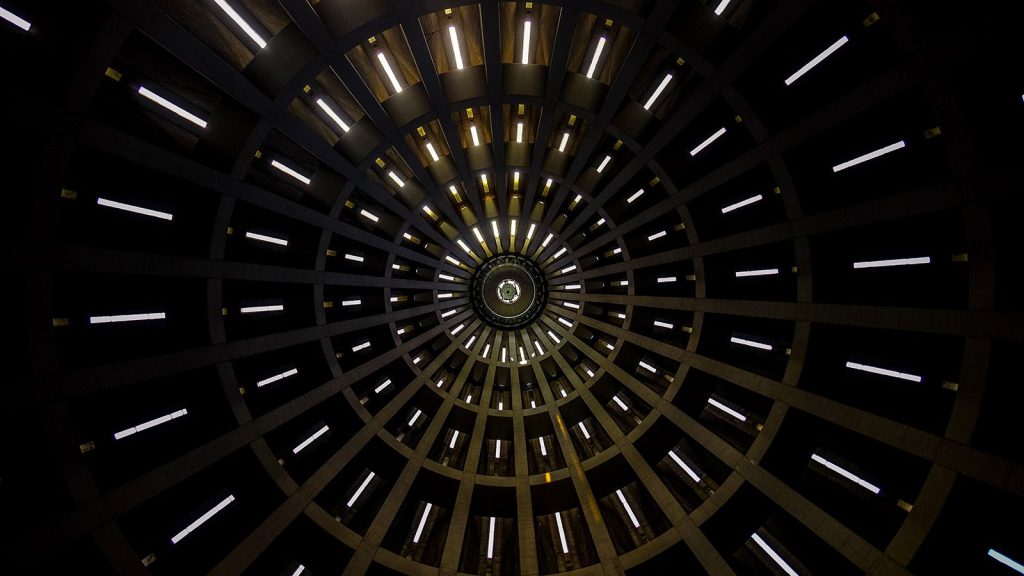Lighting Knowledge
The History And Development Of Lighting
The advent of reliable, energy efficient lighting in the home and in our places of business has and continues to play a major part in the modern way of life. Along with running water’s impact on general health, and perhaps the internet’s impact on interpersonal communication, it’s hard to imagine a more impactful technology than lighting. As you might imagine, lighting has come a long way to get to where it is today. Take a quick look at this diagram by 20th Century French Illustrator Maurice Dessertenne:

When you think about lighting, it’s important to think of three different things: the fuel source, the luminaire, and the technology used to produce visible light. We’ll touch on those three items as we look at the evolution of lighting from its birth to the modern day revolution that is happening with 21st century LED technology:
Natural Light: The most important source of light is the sun and perhaps the most underappreciated use of this abundant light is architecture designed to take advantage of Natural Lighting Photo in Pantheon it. One of the most well known examples of historical architecture utilizing daylight through its design is the Pantheon. Perhaps the most significant architectural achievement from the Roman Empire, the Pantheon is designed almost entirely around the open air circle at the top of its dome.

Torches: According to the Illuminating Engineering Society, “the first attempt at man-made lighting occurred about 70,000 years ago. The first lamp was invented made of aTorch Photo shell, hollowed-out rock, or other similar non-flammable object which was filled with a combustible material (probably dried grass or wood), sprinkled with animal fat (the original lighter fluid) and ignited.” Handheld and building mounted torches progressed well beyond their rudimentary start but the basic principles remain the same: the fuel source is some type of oil, wax, or combustible material surrounded by non-flammable material.

Candles & The Introduction Of The Wick: As you might expect, technology like ventilation (e.g. tubes and chimneys) vastly improved the ability to effectively use fire for lighting. Perhaps the most important technology advancement, however, was the introduction of the wick to produce candles. Wicks in combination with early candle materials like beeswax or tallow (a derivative of animal fat) then represented the most significant technological lighting advancement since the discovery of fire itself. According to author Patricia Telesco “candle holders dating to the fourth century B.C. have been found in Egypt.” She credits the Greeks and Romans with introducing the wick to the Egyptian idea of wickless tallow lighting. Asian societies were separately making candles out of whale fat as early as 200 B.C.

Did you know? The word candle derives from the latin word “incaendium” which means wildfire, heat, or torch. The oldest surviving beeswax candles are the Oberflacht candles that were found in the Alamannic graveyard of Seitingen-Oberflacht, Kreis Tuttlingen, Germany. They presently reside at the Württemberg State Museum in Stuttgart Germany.
The next major advancements in lighting (gas lamps and electric lamps) happened in sequence nearly a century apart with the advent and progress of the industrial revolution. Major advantages for gas (barriers to entry for electricity) included the already existing infrastructure by the time electric lights came out and the ability for dual purpose use (gas could also be used for cooking). Let’s discuss them one at a time.
Gas lamps: Gas lighting was developed in England in 1790 and introduced to the United States shortly thereafter by William Murdoch. Pelham Street in Newport, Rhode Island wasAntique Gas Lighting the first section of road in America to introduce Murdoch’s gas lights (they were installed in 1792). Only a few decades later gas fuel was being used for street lighting in major eastern cities of the United States like Philadelphia and Baltimore. You can read the full history of street lighting in the USA here. Different types of gas have been used over the years to include methane, acetylene, butane, propane, hydrogen, and natural gas. The growth of gas lamps and the infrastructure to support them in cities and suburbs mirrored the advancements of the era in hydrocarbon fuel production (coal and petroleum production and distillation).

Electric lamps: The first electric light was created by Englishman Humphry Davey. According to the US Department of Energy Davy “demonstrated the first incandescent light to the Royal Institute in Great Britain, using a bank of batteries and two charcoal rods.” His invention was what we commonly refer to as an arc light (modern day versions of which are still being used today).

Perhaps the man most well known for the development of electric light bulbs and the infrastructure to support them is American inventor Thomas Edison. In 1879 Edison set out to invent a long-lasting electric light bulb that could compete with gas lighting (particularly for indoor use). His first successful prototype was on October 22, 1879 when his incandescent light burned for 13 and a half hours. A few months after that Edison discovered a carbonized bamboo filament that would burn for 1200 hours. This was the revolutionary advancement he was looking for and it represented the necessary lighting technology required to establish electricity as the primary power source for lighting both indoors and outside.
Incandescent bulbs would go on to dominate the world of lighting until fluorescent lights were introduced commercially by Daniel McFarlan Moore circa 1904. Although early fluorescent lights required high voltage and non-standard connectors to operate, their relatively high efficiency when compared to incandescent lights was significant enough competition to cause major incandescent manufacturer General Electric to improve upon their incandescent technology by introducing the tungsten filament. Concurrently (circa 1901) an inventor named Peter Cooper Hewitt had developed the first mercury-vapor light that was both high efficiency and compatible with standard electrical infrastructure.
The 20th century was the century of high intensity discharge (HID) lamps. Amongst the most popular and commercially successful types of HID lamps are fluorescent, mercury-vapor, high pressure sodium, and metal-halide. All of these lamps are the same type of technology in that they operate by sending an electrical current between two metal electrodes and through a glass tube filled with inert gas resulting in the emission of visible light.

The one lighting technology that was significantly different from the various HID bulbs invented in the 20th century is the Light Emitting Diode (LED). LED lighting is a solid state light (SSL) that doesn’t require a glass housing like traditional bulbs and produces light by converting electrical current using a semiconductor. The first LED was invented in the 1960s by General Electric scientist Nick Holonyak who called it “the magic one.”
Modern lighting has continued to improve across the spectrum (incandescent, fluorescent, metal halide, LED etc.). Thus far the most promising lights for the 21st century appear to be LEDs. Modern LEDs have a useful lifespan 2-4 times that of their average competitor while producing high quality light much more efficiently as well. For more information on LEDs you can read here.

